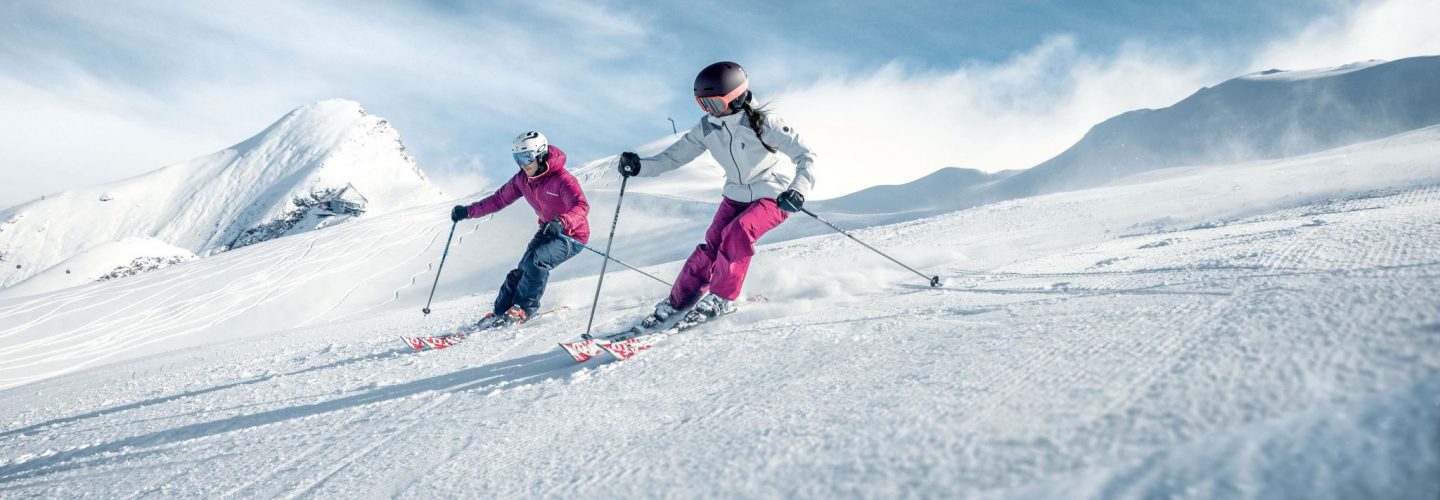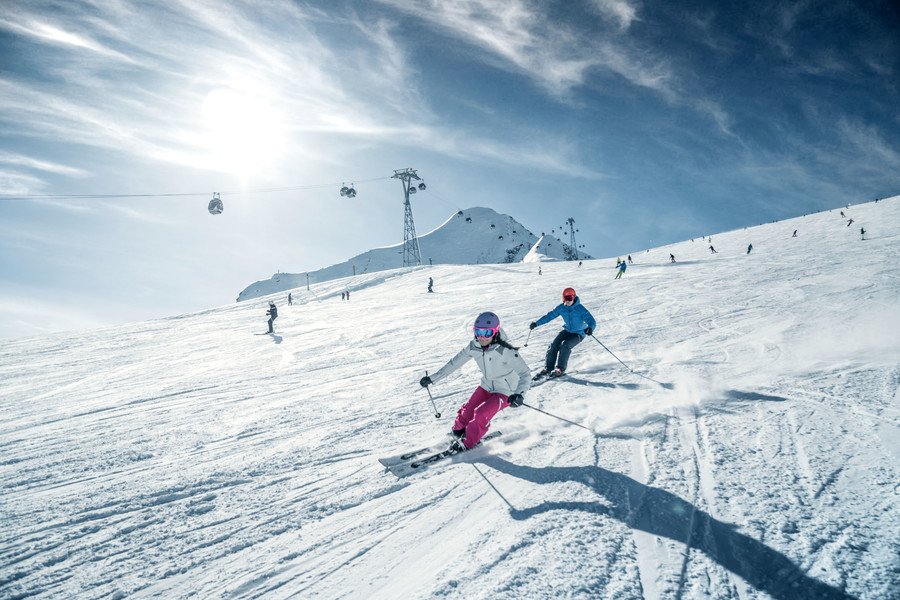A new style of skiing that is more like the downhill technique of the ‘pre-carving’ era is being taught at the large Austrian ski destination of Zell am See-Kaprun.
Describing the new technique as a “stylistic innovation in the world of alpine winter sports,” Lorenz Wallner, Head of the Zell am See ski school said that the idea behind the “aesthetic skiing“ or “cruising“ technique was to make skiing, “more elegant, safer and less stressful.”
The ski schools in Zell am See-Kaprun are teaching the technique to skiers at all ability levels from beginners to the more advanced and make learning part of a complete experience in which the descent is more leisurely, enabling skiers to enjoy the views of Lake Zell and the surrounding white peaks, and take a break in one of the cosy chalets.
“Skiing has been shaped over the past few decades by dynamic carving with a wide ski position, as well as extreme inner turns and radii. The new style marks a return to old virtues: the upright posture with a gentle bend in the knee, hip and torso, together with the narrower ski position, also ensures a more relaxed and elegant skiing style,” said Mr Wallner, adding, “More attention is also paid to the use of poles as an aid for momentum, which was almost forgotten during the carving era. Whereas the feet are still as far apart from one another as when walking normally, it is no longer desirable to turn the torso strongly towards the valley. Skiing thus becomes more pleasurable and less strenuous for the muscles and joints.”
However, despite the many similarities with the pre-carving era style of skiing, it should not be considered as a complete return to this method, the spokesperson for Zell am See-Kaprun said, adding,
“Aesthetic skiing lies in the middle between carving and old-style skiing and demands, depending on the length and shape of the skis and in accordance with the steepness of the terrain, sometimes sliding turns, sometimes carved turns with short radii,” Mr Wallner continued, concluding,
“This adjustment of the skiing technique is, of course, not a radical change. However, we may not underestimate the technical changes and their positive effects on safety, speed and the aesthetics of skiing. Movements for skiing in a more rounded motion are again in the foreground and sliding at the end of a curve is once again allowed. Making significant use of the ski edges in the turns with the resulting strong centrifugal forces is no longer the main learning objective and should be reserved for experienced skiers.”
In addition to the regained elegance on the slopes, “aesthetic skiing” also has benefits for health and safety according to Helmut Schneider, Head of the Kaprun Alpine ski school, who commented,
“Less pressure is placed on the knees and back and the entire musculature through the upright posture, reduced use of ski edges and slower speed. Primarily in the hazardous time in the afternoon when the slopes get bumpier and tiredness sets in, aesthetic skiing means that there are sufficient energy reserves available to prevent injuries. Furthermore, with this style the skier is more mobile and can react better to obstacles.”
Private lessons and group ski courses can be booked via the websites of the relevant ski schools.




